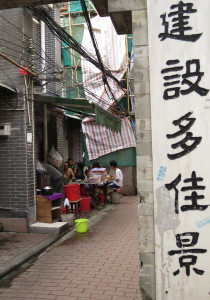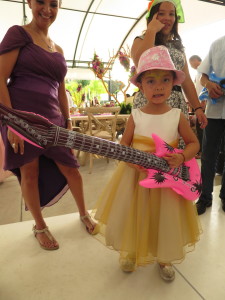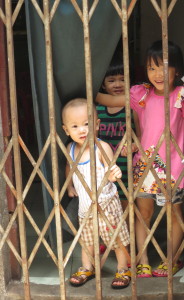- Details
Transformation Continues on All Levels 2
Is Cantonese dying? Last weekend’s visit to Guangzhou was quite depressing in many ways. It’s nothing new that people from all over China migrate to Guangdong province, especially Shenzhen and Guangzhou, to make something of their lives. That’s why we have a lot of people, taxi drivers in particular, who live in Guangdong province without being able to speak the local language Cantonese.
What is new, or rather, a phenomenon that’s only a few years old (I’ve visiting Guangzhou regularly for 27 years) is that local people in the cradle of Cantonese answer me in Mandarin when I address them in their own language. You could say that people in Guangzhou have become like Hong Kong people when it comes to steadfastly, relentlessly and tenaciously answer people in a completely different language than the one they have been addressed in.

It’s not that long ago that Guangzhou people were delighted when I talked to them in Cantonese. Now they look bewildered, almost scared, and keep quacking away in that ear-off-tearing torture sound that is native Cantonese speakers talking Mandarin. And no, they’re not immigrants from other provinces. They are locals.
No, this must be caused by some kind of edict being hammered into them from on high; I’m guessing some kind of tiny little carrot and a rather big stick. The Chinese government is on a mission to wipe out Cantonese and nothing is going to stop them. That is no surprise, after all, the communists started controlling the Chinese people even before they came into power in 1949. But now the local people are aiding and abetting them full throttle. Not only by following “warm prompts” (‘gentle reminder’ in Chinglish) from schools not to let their children learn Cantonese, but also by being afraid to talk Cantonese in general. It has come to this.
I don’t know how many times I’ve heard from foreigners learning Cantonese: “I went to Shenzhen/Guangzhou/Zhuhai but no one could speak Cantonese”. This is not true. I would say everyone except taxi drivers and hotel receptionists can speak Cantonese. They have just been told on pain of death not to speak it to foreigners. Or anyone. But I know a little ditty that will soon put a smile on their face and a Cantonese on their tongue!
廣東人講廣東話
聽唔明就返鄉下
Gong Dong Yan gong Gong Dong Wah
Teng m meng jau fan heungha
Cantonese people speak Cantonese
If you don’t understand, go back to your ancestral village
If you want to know how to say it, watch the film below.
(Some people say 廣州話 (Gong Jau Wah). In fact Cantonese has many names. 廣東Gong Dong is the province. 廣州 Gong Jau is the capital city. 粵語(yut yu – Cantonese Language) 白話(bak wah – White Language or vernacular) 廣付話 (Gong Fu Wah – Cantonese Language)
- Details
CantoNews Live from the Throbbing Metropolis of Mui Wo
Nick (a.k.a. Cassette) and I go to an Italian restaurant in the throbbing metropolis of Mui Wo, centre of the universe and make a programme about lots of interesting things – specifically the idiotic spelling →
Last Column
Yesterday I had an email from a … person, who said: “I sobbed vehemently when I saw your last Sunday Morning Post entry had come and gone.” Me too, mate, me too. Except I didn’t →
Happy Hong Kong Celebration of the Glorious Return to the Motherland Day Extravaganza!
July 1st! July 1st! That day in year zero for Hong Kong, 1997, it was rather wet. OK, it torrentially bucketed down for about three weeks before and after that momentous day. Coincidence? I think →
“Don’t Look at my Spleen!”
Here is an interview I did for Radio Lantau a couple of weeks ago, with Edward Bunker from Mui Wo. Every single person I told this to said the same: “Oh, he’s lovely!” Not a →
Books Books Books
Can you learn Cantonese from a book? I would say no, not least because of the crazy spelling that bear little or no resemblance to the sound of the words. Can you indeed learn any →
Beautiful Day On “Dark” Side
It’s so much fun to have friends visiting Hong Kong, especially when the day they arrive kicks off a week of unprecedented beautiful weather! I shouldn’t say unprecedented; the weather was probably like this every →
How Now, Guangdong Prov?
I’m just about to write my last column ever for South China Morning Post; ever! When I was told the page would be discontinued, I was so sad. How now would I be able to →
CantoNews 5 Live From Roof!
Hello everybody, welcome to my roof! I normally arrange Sichuan dinners and lunches there, but this time it doubled as a recording studio for the best Cantonese news currently available on cassette! (And telex.) Talking →
Running Interview Live from Garden Café
A couple of weeks ago I interviewed the beautiful and delightful Zein Williams, mother of three and tireless champion for the Nepali people about her life and work – with the earthquake victims especially – →
CantoNews Live From Oi Kwan Hotel
Oh Cassette! Two weeks ago we went up to Guangzhou to see him live in his stand-up glory at a place called… Panda something? No! Paddyfield, an Irish pub right behind the Garden Hotel. Cassette →
- Details
Chinese New Year Looms
Am I the only one who thinks there are too many holidays in Hong Kong? I feel I’ve just come back from my Christmas trip – BOOM! Another big holiday immediately heaves into view. I →
New Website – New Instruction Videos! (Well. New Covers, Anyway)
If you’re unfortunate enough to live outside Hong Kong and can’t take Cantonese lessons from, er, moi, there’s no need to despair! Now you can have a mini-Cantonese fundamentalist right in your living room. Fun, →
The Last Time I’ll Mention “Cold” (Mad River Swimming)
So people are going in search of ice on which to seriously hurt themselves and icicles to photograph in astonishment. Yes it was 3C this morning. Not boiling, I’ll admit. But imagine going out this →
SUNDAY: “Cold”
Hong Kong is in a frost frenzy! The temperature has crept below 10C – the temperature in my living room, that is – and everyone is busy posting, of all things, screen shots of their →
The Imperialism Continues
The Mandofication continues at breakneck speed. I’m sure the “great” idea of making Hong Kong simplified character-ised to “adapt” and accommodate the 700,000 mainlanders currently living here so they’ll feel more at home, has already →
New Website!!!!
I’ve finally got my new website up. According to my web guy, it will help sell my two Cantonese teaching videos Cantonese – The Movie and Going Native. I have just watched those two videos →
Back In The Filming Saddle! (Camera Dies During Filming of Mexican Wedding)
Woo-hooo. My last message was pretty depressed. I talked about how I have the least job satisfaction in the entire world, yea, even less than people whose job is warning people about the dangers of →
Job Satisfaction
While having lunch (or was it cocktails? Yes! Cocktails!) with my friend Jo in Tibet northern Yunnan the other day, I suddenly realised that few people in the world has less job satisfaction than me. →
Lao Wai
The new year celebrations were hard for everyone this year, even man-sized teddies. This sad corpse was lying outside my hotel in Kunming, I’m guessing thrown angrily away by some girl who had expected diamonds →
Opulent Chair Sitting – Almost!
If there’s one thing I missed during this Christmas and New Year’s Yunnan Extravaganza, it was the chance to do some serious Opulent Chair (or Sofa)- Sitting. How strange; Guangdong province is replete with ultra-opulent →
Contact us today
Email info@learncantonese.com.hk
to find out how you can start learning Cantonese.




